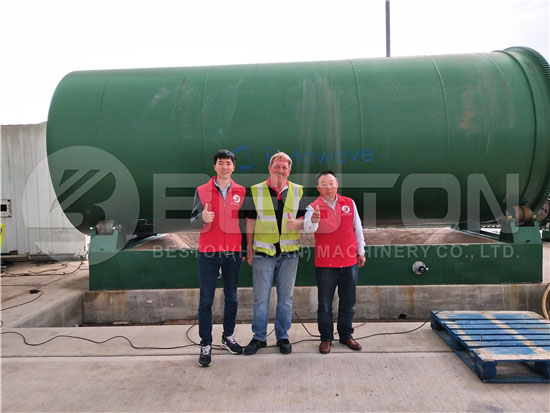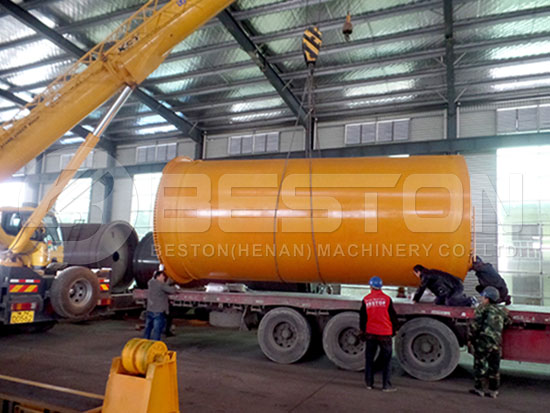Pyrolysis plants are used to process many different types of garbage, such as oil sludge, plastic waste, scrap tires, municipal solid waste, etc. One of the most popular uses for such plants is tire recycling. With a waste tyre pyrolysis plant, valuable materials can be recovered from scrap tires that would otherwise be incinerated or buried. Both incineration and burial of rubber-based waste have damaging impacts on the environment, so tire to oil pyrolysis machines offer a welcome alternative.

A Beston tire pyrolysis reactor comes with a manufacturer’s service guarantee and is super easy to install. Consequently, continuous pyrolysis plants from the manufacturer are the go-to choice for many businesses in the tire waste processing industry. The manufacturer sells many different plant models and configurations.
Continuous Vs Semi-Continuous Vs Batch
To begin with, you need to learn the differences between continuous tire pyrolysis plants and their semi-continuous counterparts. A semi-continuous pyrolysis machine has screw automatic feeders and a rotary reactor. The purpose of the screw automatic feeders is to ensure tire waste is moved into the reactor chamber without introducing lots of air into the closed system. The machines can be operated with a relatively small labor force and are easy to maintain. More details can be found: https://ecobeston.com/continuous-pyrolysis-plant/.

In contrast to semi-continuous pyrolysis plants, continuous tire pyrolysis machines, for example, the Beston BLL-20, have fixed (horizontal) reactors and automatic dischargers. The high automation levels of such machines mean that businesses can enjoy massive savings on manual labor costs. Furthermore, such machines are designed to use the combustible gas produced during tire pyrolysis more efficiently for reactor furnace reheating. Continuous models are equipped with state-of-the-art safety features to ensure a safe working environment for manual workers.
If you are planning to process over 20 tons of waste tires each day, a fully continuous rubber pyrolysis plant is going to be your best option. Such plants will enable you to produce large quantities of tire oil, combustible gas, carbon black, and steel wire each day from your tire waste. The plants can operate 24/7 and are designed to maximize oil yields. Be sure to look at plant configurations that come with automatic tire grinding machines.
Beston Pyrolysis Plant Emissions
One of the greatest things about the tire to fuel plant from Beston is that they can be equipped with 4-stage emission cleaning modules. The first stage cools any smoke using water cooling condensers. In the second stage, smoke cleaning occurs via water spraying, water washing, and ceramic ring adsorption techniques. Then, to ensure emissions meet strict pollution standards, they pass through activated carbon absorption towers. The 4-stage advanced dedusting emission cleaning system means tire to oil plants output zero pollution into the earth’s atmosphere.
To learn more about Beston tire pyrolysis plant project reports be sure to check out the manufacturer’s official website. On the said website, you can explore the technical specifications of all the tire to oil machines the manufacturer sells as well as read case studies from tire pyrolysis plants around the world.